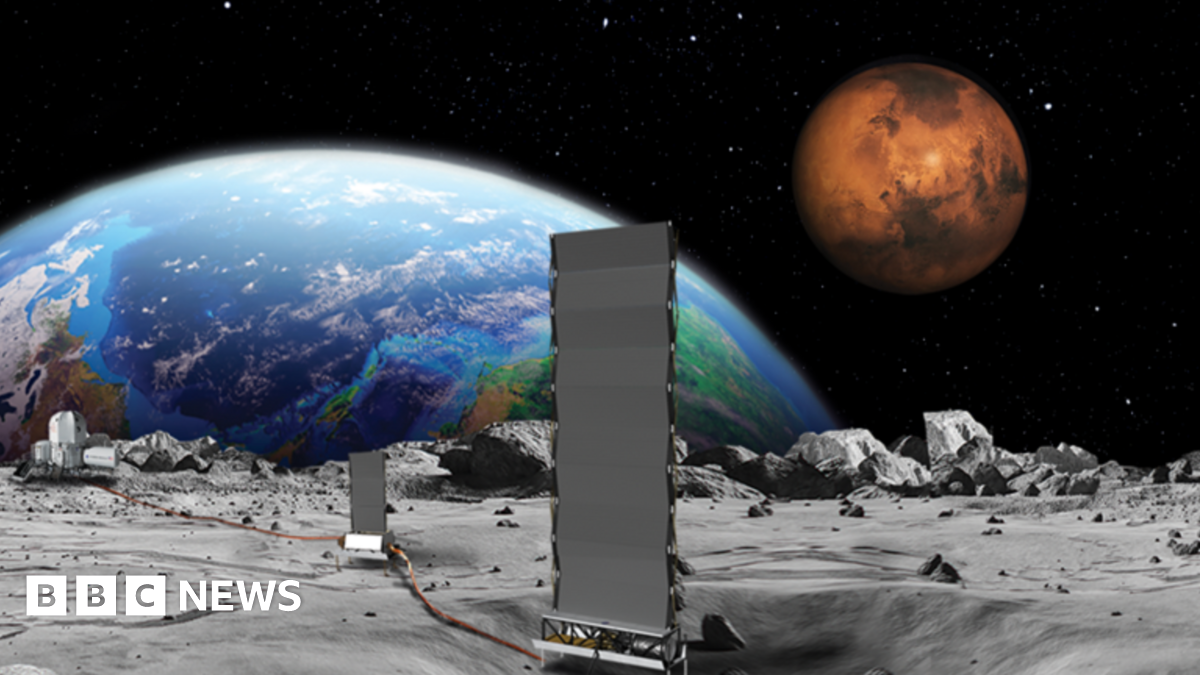Lunar Nuclear Power: NASA's Ambitious 2030 Deadline

Welcome to your ultimate source for breaking news, trending updates, and in-depth stories from around the world. Whether it's politics, technology, entertainment, sports, or lifestyle, we bring you real-time updates that keep you informed and ahead of the curve.
Our team works tirelessly to ensure you never miss a moment. From the latest developments in global events to the most talked-about topics on social media, our news platform is designed to deliver accurate and timely information, all in one place.
Stay in the know and join thousands of readers who trust us for reliable, up-to-date content. Explore our expertly curated articles and dive deeper into the stories that matter to you. Visit Best Website now and be part of the conversation. Don't miss out on the headlines that shape our world!
Table of Contents
Lunar Nuclear Power: NASA's Ambitious 2030 Deadline – Can They Pull It Off?
The moon. Humanity's celestial neighbor, a barren landscape holding the potential for groundbreaking scientific discovery and, increasingly, a vital role in our future space exploration. NASA's ambitious plan to establish a sustainable lunar presence hinges on a crucial technological leap: nuclear power on the moon. With a target date of 2030 looming, the race is on to develop and deploy a reliable, safe, and efficient nuclear fission reactor for lunar operations. But can they meet this incredibly demanding deadline?
The Need for Lunar Nuclear Power
Current solar power solutions, while effective in some applications, fall short for establishing a long-term, human-habitable lunar base. The lunar day-night cycle, lasting approximately 29.5 Earth days, means prolonged periods of darkness where solar power is unavailable. Nuclear fission, however, offers a consistent and reliable energy source, crucial for powering life support systems, scientific equipment, and potentially even lunar manufacturing processes. This consistent power is a game-changer, enabling continuous operation regardless of the lunar cycle, unlike solar power solutions which are inherently intermittent.
NASA's Fission Surface Power (FSP) Project
NASA's ambitious plan centers around the Fission Surface Power (FSP) project, aiming to develop a compact, high-power nuclear fission reactor capable of operating reliably on the lunar surface. This isn't simply a matter of adapting existing terrestrial reactor technology; the harsh lunar environment presents unique challenges. Extreme temperature variations, micrometeoroid impacts, and the absence of a protective atmosphere demand a robust and resilient reactor design.
Key Challenges and Potential Solutions
Several hurdles stand in the way of meeting the 2030 deadline:
- Technological Development: Creating a reactor capable of withstanding the lunar environment and meeting the power requirements is a monumental engineering task. This includes developing advanced materials resistant to radiation and extreme temperatures.
- Safety and Regulatory Hurdles: The deployment of a nuclear reactor on the moon necessitates rigorous safety protocols and international cooperation to address concerns about potential accidents and environmental impact. International space law and regulatory frameworks will need to adapt to this new frontier.
- Cost and Funding: The development and deployment of a lunar nuclear reactor will be incredibly expensive. Securing sufficient funding and managing the project's budget effectively will be crucial to success.
- Logistics and Transportation: Transporting the reactor and associated components to the moon presents significant logistical challenges, demanding innovative launch and landing systems.
Despite these challenges, promising advancements are being made. NASA is collaborating with various private companies and national laboratories, leveraging their expertise to accelerate development and overcome these obstacles. The focus is on modular and scalable designs to reduce risks and enhance reliability.
Beyond 2030: The Broader Implications
Successful deployment of lunar nuclear power will have far-reaching consequences, extending beyond simply powering a lunar base. This technology could pave the way for:
- Extended Lunar Exploration: Enabling longer and more ambitious lunar missions, potentially including establishing permanent human settlements.
- Deep Space Exploration: Providing a reliable power source for future missions to Mars and beyond.
- Resource Extraction: Powering equipment for extracting valuable resources from the lunar surface, contributing to in-situ resource utilization (ISRU).
Conclusion: A Bold Leap Forward or a Distant Dream?
NASA's 2030 deadline for lunar nuclear power is incredibly ambitious. The technical, logistical, and regulatory hurdles are substantial. However, the potential rewards—a sustainable lunar presence, the opening of new avenues for space exploration, and the advancement of nuclear technology—make this audacious goal worthy of pursuit. The coming years will be crucial in determining whether this ambitious dream becomes a reality. Only time will tell if NASA can successfully navigate these challenges and usher in a new era of lunar exploration powered by nuclear energy. Stay tuned for updates as this pivotal project progresses.

Thank you for visiting our website, your trusted source for the latest updates and in-depth coverage on Lunar Nuclear Power: NASA's Ambitious 2030 Deadline. We're committed to keeping you informed with timely and accurate information to meet your curiosity and needs.
If you have any questions, suggestions, or feedback, we'd love to hear from you. Your insights are valuable to us and help us improve to serve you better. Feel free to reach out through our contact page.
Don't forget to bookmark our website and check back regularly for the latest headlines and trending topics. See you next time, and thank you for being part of our growing community!
Featured Posts
-
 Debate Intensifies Cooper Demands Increased Disclosure Of Suspects Immigration Information
Aug 07, 2025
Debate Intensifies Cooper Demands Increased Disclosure Of Suspects Immigration Information
Aug 07, 2025 -
 Portland Sees Widespread Rain Wednesday Morning Transitioning To Scattered Showers
Aug 07, 2025
Portland Sees Widespread Rain Wednesday Morning Transitioning To Scattered Showers
Aug 07, 2025 -
 The Growing Threat North Korean It Workers Ai And Us Corporate Espionage
Aug 07, 2025
The Growing Threat North Korean It Workers Ai And Us Corporate Espionage
Aug 07, 2025 -
 Ion Iliescu 1989 1996 Remembering Romanias First Freely Elected President
Aug 07, 2025
Ion Iliescu 1989 1996 Remembering Romanias First Freely Elected President
Aug 07, 2025 -
 Tv Presenter Jay Blades Accused Of Rape Two Charges Filed
Aug 07, 2025
Tv Presenter Jay Blades Accused Of Rape Two Charges Filed
Aug 07, 2025
Latest Posts
-
 Steelers Add Former Bengals Qb Logan Woodside To Roster
Aug 07, 2025
Steelers Add Former Bengals Qb Logan Woodside To Roster
Aug 07, 2025 -
 Love And Hip Hop Atlanta Personality Faces Charges Following Airport Incident
Aug 07, 2025
Love And Hip Hop Atlanta Personality Faces Charges Following Airport Incident
Aug 07, 2025 -
 Addiction Concerns Rise Over Supplements Sold At Gas Stations
Aug 07, 2025
Addiction Concerns Rise Over Supplements Sold At Gas Stations
Aug 07, 2025 -
 Logan Woodside From Bengals Backup To Pittsburgh Steeler
Aug 07, 2025
Logan Woodside From Bengals Backup To Pittsburgh Steeler
Aug 07, 2025 -
 The Enduring Danger Of Ex Gay Conversion Therapy A Critical Look
Aug 07, 2025
The Enduring Danger Of Ex Gay Conversion Therapy A Critical Look
Aug 07, 2025
